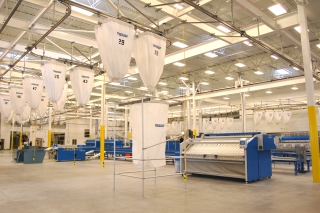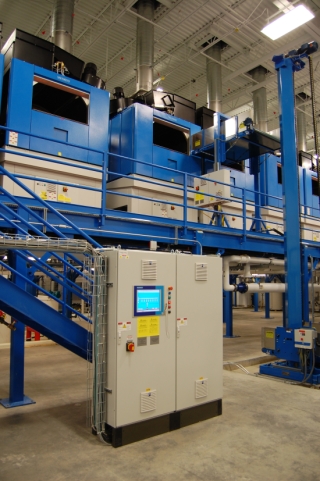|
Subscribe / Renew |
|
|
Contact Us |
|
| ► Subscribe to our Free Weekly Newsletter | |
| home | Welcome, sign in or click here to subscribe. | login |
Real Estate
| |
July 5, 2013
New laundry in Auburn: Where 11 area hospitals do the wash
Journal Staff Reporter
For the average household, laundry is just another chore, but for the numerous hospitals in this region clean sheets, scrubs and patient gowns are just as important as water or heat.
For the last 50 years, most of the region's hospitals and medical centers have relied on the Hospital Central Services Association, which had a building on First Hill, to do their mountains of laundry, but over time the equipment was overwhelmed and outdated.
HCSA recently opened a new 146,000-square-foot laundry on Northwest M Street and 15th Street Northwest in Auburn, and plans to do laundry there for at least the next 50 years. About 125 people will work in the new laundry.
Much of the focus is on long-term sustainability, as evidenced by its slogan: “2060 and beyond.”
Updated systems in the new laundry are expected to save 40 million gallons of water every year. Paul Berger, director of HCSA, said water will be treated and reused over and over again.
Excess heat from ironing machines in one area of the building is mixed with heat from the boiler room and reused to dry clothes.
“We've got a recycled product, recycled heat and water, and that translates to about three quarters of a million in savings this year and a lot more later,” Berger said.
The new laundry will serve 11 area hospitals including Overlake Hospital Medical Center, Providence Health & Services, Seattle Children's, Swedish Medical Center, and Virginia Mason Hospital and Medical Center.
All together, HCSA will process more than 20 million pounds of laundry a year.
The process starts when trucks bring in dirty laundry and deposit it into several large chutes. The soiled laundry runs through the 61-foot-long “tunnel washers.” Materials then are dried and transferred to a sorting area where they are ironed and folded by machines before being sent back to hospitals.
Panattoni Development Co. was the developer, and Kinzer Real Estate Services was the broker on the project and managed finances.
Seneca Group was the project manager, and Group Mackenzie was the architect. Graham Construction was the general contractor.
McKinstry handled both the engineering and installation of the mechanical, electrical, plumbing, and fire protection systems. Barghausen Consulting Engineers was civil engineer. Washington Federal financed the deal.
Kemco Systems provided water recycling equipment and Jensen was the primary supplier of the laundry equipment.




